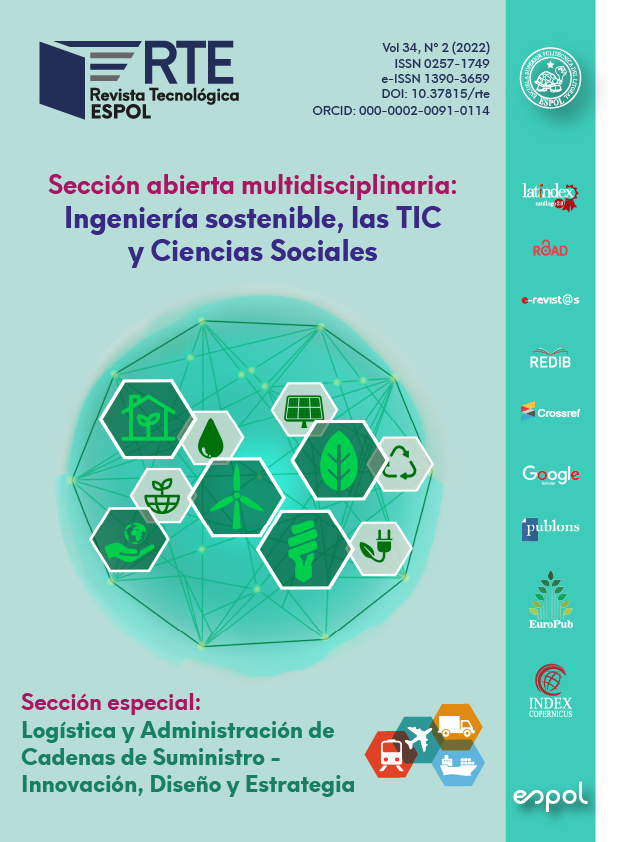Una arcilla expansiva es aquella que sufre grandes variaciones de volumen según los cambios de humedad a los que está expuesta, produciendo una expansión con el aumento de humedad y una contracción con la disminución. Este fenómeno genera problemas significativos en las obras que deben cimentarse sobre este tipo de suelo. El diseño experimental consiste en efectuar pruebas de laboratorio para determinar las propiedades físicas y mecánicas de 3 muestras de arcilla expansiva, las que se comparan con muestras de suelo estabilizadas. La estabilización se realiza mediante el reemplazo de suelo por varios porcentajes de ceniza, para controlar su cambio de volumen. Para ello, se usan dos tipos de cenizas, la primera proveniente del volcán Tungurahua y la otra de origen orgánico (ceniza de cascarilla de arroz), combinadas en una proporción de partes iguales (50% - 50% en peso). Los ensayos se aplican sobre muestras de suelo con los reemplazos del 10%, 20% y 30% en peso del suelo arcilloso, por la mezcla estabilizadora de cenizas. La combinación de ceniza en la masa del suelo logra una reducción del efecto de cambio de volumen típico de las arcillas expansivas puras, una disminución del límite líquido, un descenso de la gravedad específica, disminución del índice de expansión e incremento en la resistencia al corte y coeficiente de consolidación.

Esta obra está bajo una licencia internacional Creative Commons Atribución-NoComercial 4.0.
Referencias
ASTM D3080. (2011). Standard Test Method for Direct Shear Test of Soils Under Consolidated Drained Conditions.
ASTM D4318. (2017). Standard Test Methods for Liquid Limit, Plastic Limit, and Plasticity Index of Soils. Alonso, E. E., Vaunat, J., & Gens, A. (1999). Modelling the mechanical behaviour of expansive clays. Engineering Geology, 54(1), 173-183. https://doi.org/10.1016/S0013-7952(99)00079-4
Angelone, S., Garibay, M., & Cauhapé, M. (2006). Permeabilidad de Suelos. Facultad de Ciencias Exactas, Ingeniería y Agrimensura, Universidad Nacional de Rosario.
ASTM D854. (2014). Standard Test Methods for Specific Gravity of Soil Solids by Water Pycnometer.
ASTM D1557. (2012). Standard Test Methods for Laboratory Compaction Characteristics of Soil Using Modified Effort (56,000 ft-lbf/ft3 (2,700 kN-m/m3)).
ASTM D2216. (2010). Test Method for Laboratory Determination of Water Content of Soil and Rock.
ASTM D2434. (2006). Standard Test Method for Permeability of Granular Soils (Constant Head).
ASTM D2435. (2011). Standard Test Methods for One-Dimensional Consolidation Properties of Soils Using Incremental Loading.
ASTM D2487. (2017). Standard Practice for Classification of Soils for Engineering Purposes (Unified Soil Classification System).
ASTM D4829. (2011). Standard Test Method for Expansion Index of Soils.
ASTM D6913. (2017). Standard Test Methods for Particle-Size Distribution (Gradation) of Soils Using Sieve Analysis.
Atemimi, Y. K. (2020). Effect of the grain size of sand on expansive soil. doi:10.4028/www.scientific.net/KEM.857.367
Basma, A. A., Al-Homoud, A. S., Husein Malkawi, A. I., & Al-Bashabsheh, M. A. (1996). Swelling-shrinkage behavior of natural expansive clays. Applied Clay Science, 11(2), 211-227. https://doi.org/10.1016/S0169-1317(96)00009-9
Bose, B. (2020). Correlation of compressibility behaviour with activity of clay. International Journal on Emerging Technologies, 11(3), 828-832. Retrieved from www.scopus.com
Cheng, Y., Wang, S., Li, J., Huang, X., Li, C., & Wu, J. (2018). Engineering and mineralogical properties of stabilized expansive soil compositing lime and natural pozzolans. Elsevier, 187 Beijing, China. doi:10.1016/j.conbuildmat.2018.08.061.
Das, B. (2015). Fundamentos de Ingeniería Geotécnica. Cengage Learning Editores, S.A., México.
Ganta, S. (2017). Soil Stabilization with Rice Husk Ash and Lime Sludge. International Journal of Research, 4(14): 1112 – 1119.
Goldstein, J., Newbury, D., Echlin, P., Lyman, C., Lifshin, E., Sawyer, L., & Michael, J. (2003). Scanning electron microscopy and X-ray microanalysis. New York: Kluwer Academic/Plenum Publishers.
Kataoka, S., Shibuya, S., & Uematsu, S. (2017). Ensayos de laboratorio y terraplen a gran escala de la mezcla deescoria y suelo de grano fino. Paper presentado en la ICSMGE 2017 - 19th International Conference on Soil Mechanics and Geotechnical Engineering, 2017-September 939-942.
Manosalvas, S. (2014). Instituto Geofísico de la Escuela Politécnica Nacional. Obtenido de https://www.igepn.edu.ec/detectores-de-lahares/content/18-tungurahua.
Moreno, S., & Rodríguez, J. (2013). Determinación de las propiedades índices y mecánicas de los suelos expansivos en la vía San Mateo-Esmeraldas zona de Winchele, realizando los ensayos con agua potable y con agua de mar. Repositorio digital PUCE (Pontificia Universidad Católica del Ecuador). Obtenido de http://repositorio.puce.edu.ec/handle/22000/6236
NEC-SE-CM (s. f.). Recuperado 25 de noviembre de 2021, de https://www.habitatyvivienda.gob.ec/wp-content/uploads/downloads/2014/08/NEC-SE-CM.pdf
Sivrikaya, O., Togrol, E., & Kayadelen, C. (2008). Estimating compaction behavior of fine-grained soils based on compaction energy. Canadian Geotechnical Journal, 45(6), 877-887. DOI:10.1139/T08-022
Sridharan, A., & Nagaraj, H. B. (2005). Plastic limit and compaction characteristics of fine-grained soils. Ground Improvement, 9(1), 17-22. doi:10.1680/grim.9.1.17.58544
Syahril, S., Somantri, A. K., & Haziri, A. A. (2020). Estudios de las caracteristicas del suelo arcilloso estabilizado utilizando cenizas volcanicas y relaves como capas de subrasante. Paper presentado en la IOP Conference Series: Materials Science and Engineering, 830(2) doi:10.1088/1757-899X/830/2/022043







